時(shí)間(jiān):2019-06-01
2019年(nián)5月(yuè)30日(rì)到(dào)6月(yuè↑ ₩♠)1日(rì),合肥常青學校(xiào)師(shī≈♣)生(shēng)一(yī)行(xíng)深入徽州進行(xíng)基地★λ"α(dì)研學課程。讀(dú)萬卷書(shū),行(xíng)萬 α✘₩裡(lǐ)路(lù),基地(dì)研學是(shì)把課堂延伸到(dào✘♥₽ )祖國(guó)的(de)大(dà)江南(nán)北(běi),更是(shìγ£)捕捉課本上(shàng)沒有(yǒu)的(de)萬物(wù)之輝,地(d£>ì)球之美(měi),讓孩子(zǐ)在快(k₽↔>uài)樂(yuè)的(de)研學中進行(xíng)體•φ→★(tǐ)驗式、研究式學習(xí)。走出校(xiào)園,走近(jìn)文∏<₩(wén)化(huà),觸摸曆史,讓孩子(zǐ)在真÷®φ實的(de)社會(huì)中去(qù)鍛煉,在參觀中≤&'體(tǐ)驗,在團隊中感悟。
Read 10,000 books and tr♠π₽avel 10,000 miles. L∑₽☆earning base researc&&→>h is to extend the classroo±¥×m to the motherland, but also to c∞≥★♠apture the glow of the na♦λ↔♣ture and the beauty of the Earth that λ✘σcan’t be found in the textboo&&→≠k, so that children can s÷® tudy through experien∑βce. Get out of the c±₩ampus, approach the culture, t✘ouch the history, let the ch₹✘ild to exercise in thφ§∞e real society, in t¥±®he visit experience and in thσ±e team sense. Let's go on the way.
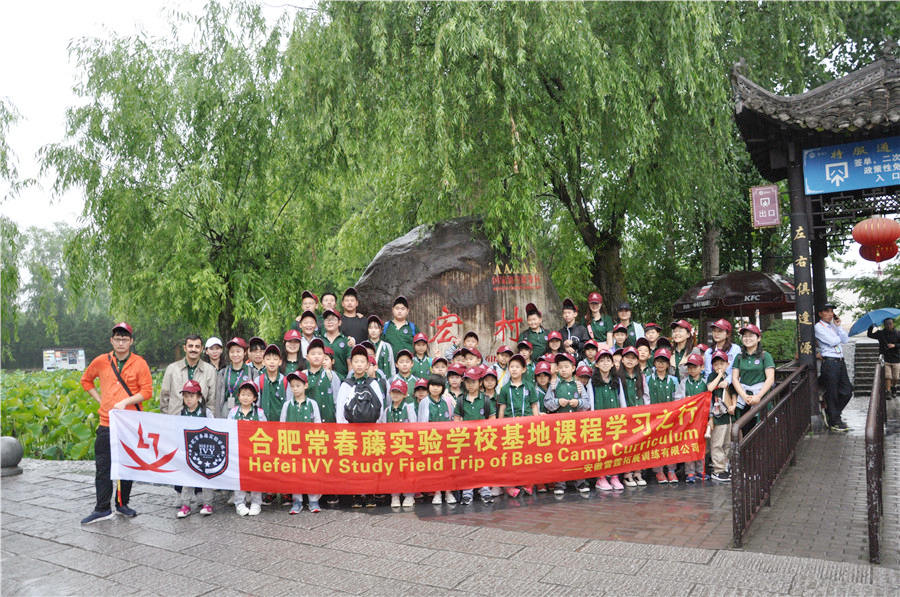
本次研學,我們從(cóng)黃(huáng☆λ©)山(shān)的(de)宏村(cūn)開(kā>¥≈∞i)始,走過呈坎,來(lái)到(dào)茶文(wén)化(huà)博物(wùβ™ ¥)館,穿過棠樾牌坊群,遊覽鮑家(jiā)花(huā)園,參觀了(le)中國₹↑₩®(guó)宣紙(zhǐ)文(wén)化(huà)園,最後,來♠₹∑₩(lái)到(dào)雲嶺新四軍舊(jiù)址,聆聽(tīng)戰争年(ni×'án)代艱苦歲月(yuè)的(de)故事(shì)≠≈。
This study, we start from•₽≠↓ the Hongcun of Huangshan, through Chen★→gkan, came to the tea Cult§₩♦"ure Museum, through the$₩π Tong Yue Archway Grou€↓₽₹p, visit Bao Family Ga≠≈↓↕rden. We also visited the Chinese Xuan ¶ Paper Culture Museum, and finally, cam≥♠>e to the old site of Army, Yun Ling≠λ, to listen to the story of the di<'∏fficult times during th∞§e war years.
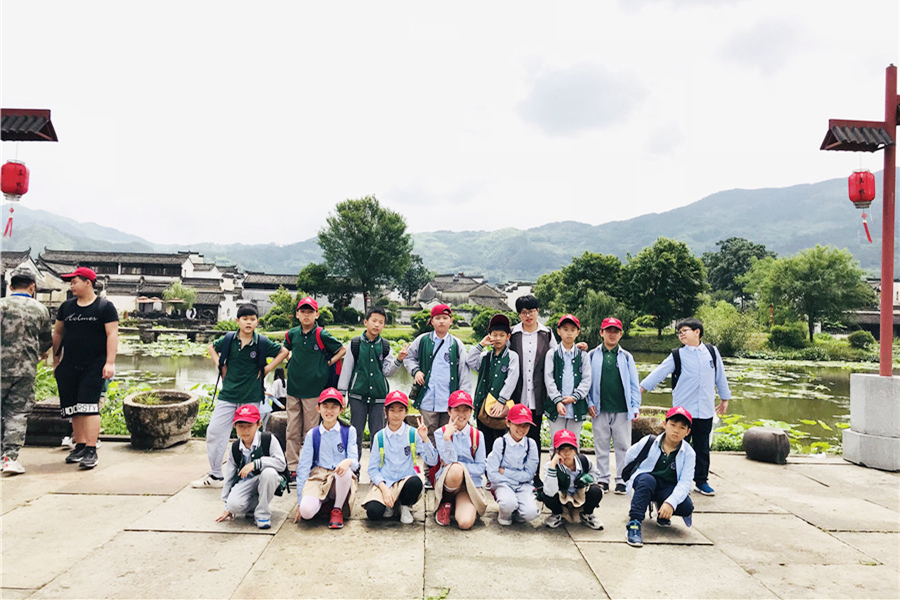
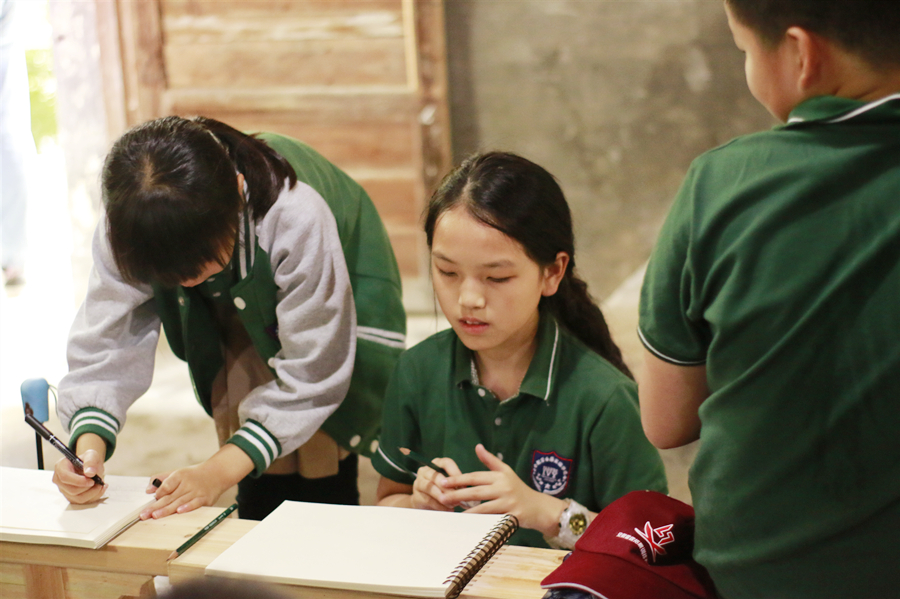
研學的(de)第一(yī)天,孩子(zǐ)們來(lái)到(dào)了(l"✔™e)風(fēng)景優美(měi)的(de)國(guó)↔ 家(jiā)級重點文(wén)物(wù)保護單σΩ♣β位、安徽省愛(ài)國(guó)主義教育基地(dì)、國(guó)家(jiΩ®©'ā)5A級景區(qū)——宏村(cūn)。宏村↓↔✘(cūn)享有(yǒu)“中國(guó)畫(huà)裡(≠∏±×lǐ)的(de)鄉(xiāng)村(cūn)”之美(×✔•měi)稱,因地(dì)勢較高(gāo),常常雲蒸霞蔚,時(shí→↑∏)而如(rú)潑墨重彩,時(shí)而如(rú)淡抹寫意,恰似山→¶®Ω(shān)水(shuǐ)長(cháng)卷,融自(α<zì)然景觀和(hé)人(rén)文(wén)景觀為(wèi)一(y←±→ ī)體(tǐ),是(shì)古黟桃花(huā)源 裡(lǐ)一(yī)座奇特的(de)牛形古村(cūn)落。
On the first day of study, childre≠≈≤n came to the scenic national key Cul•<≠×tural Relics Protection Units♦γ>β, the patriotic education•€ base in Anhui Province, the Natio←∑Ωnal 5 A-Class scenic spot-Ho÷∏←ngcun.
Hongcun is regarded as the ★∑§"Chinese painting in the countrys♦→'ide", because of the higher terra↕in, cloudy weather, sometime•≤β™s it turns the color♦☆ such as splashing ink heavy color. I↔₽§βt blends in natural landscap&©©e and cultural landscap"α'∑e as one. It is a unique ✘$bull-shaped ancient villa&↔ge.
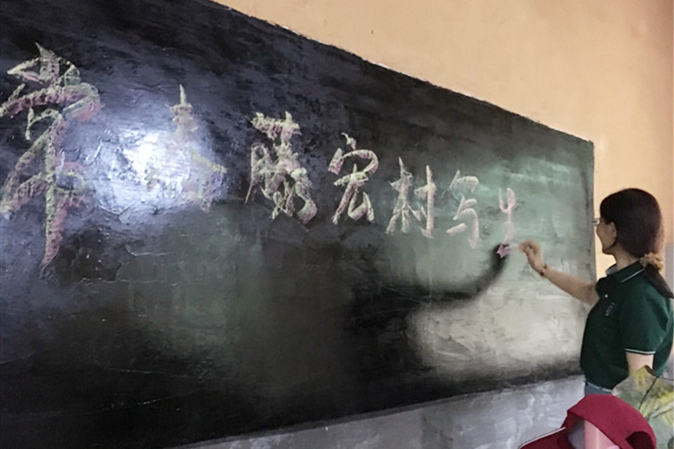
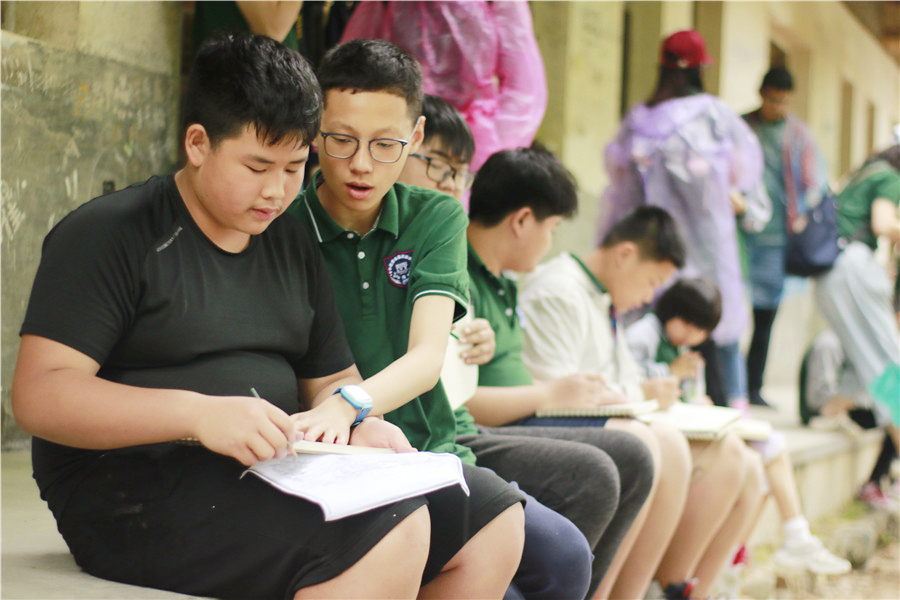
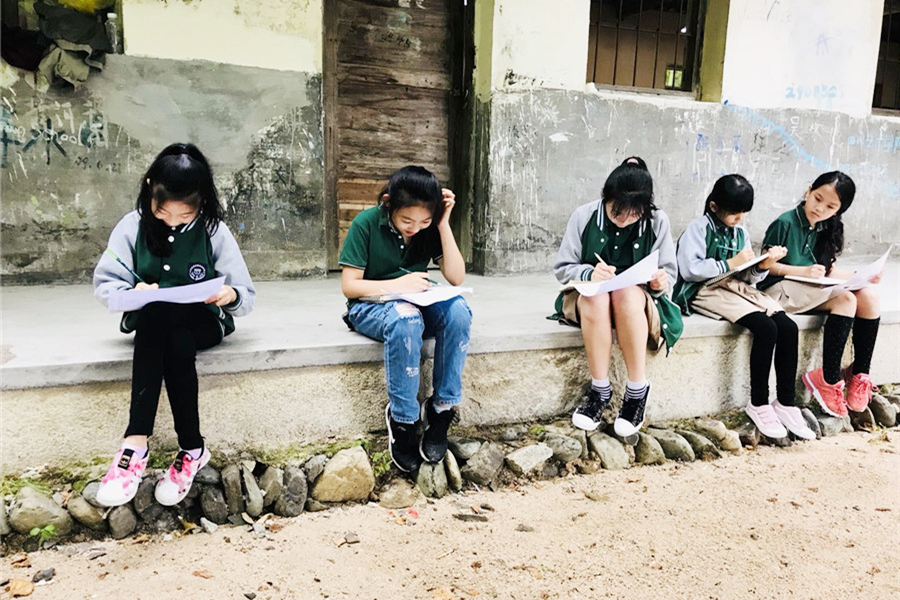
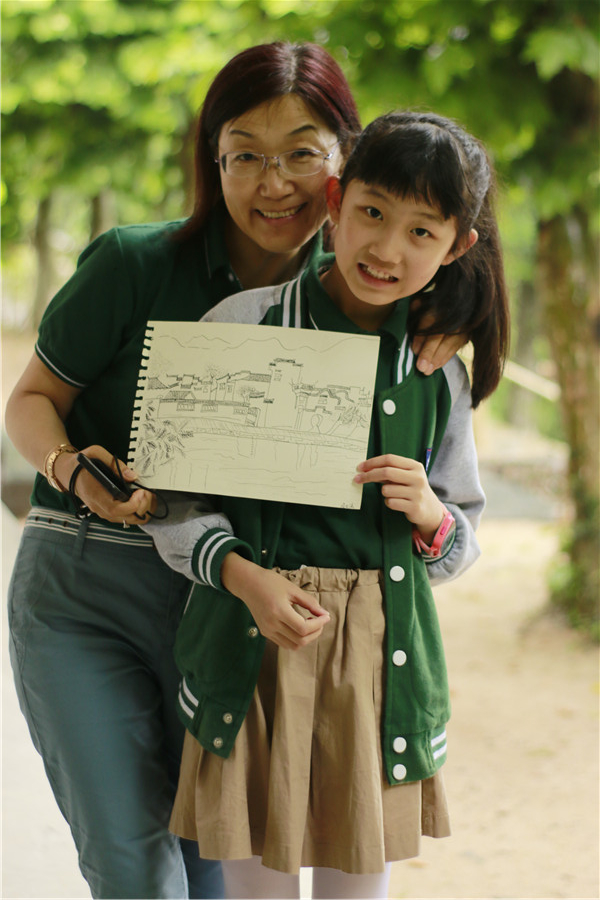
在宏村(cūn),伴著(zhe)細雨(yǔ₹€☆)綿綿,踏著(zhe)青石闆路(lù),沿著(zhe)白(báiβ☆)牆灰瓦,綠(lǜ)樹(shù)青山(shān),孩子(zǐ)¥ ↓們仿佛穿越回到(dào)了(le)上(shàng)₽¥百年(nián)前,洗滌了(le)身(shēn)心。在這(zhè)古×&風(fēng)古韻的(de)建築群中,大(>☆>dà)家(jiā)撐起了(le)畫(huà)闆,想要(yào)≈₽≠用(yòng)手中的(de)畫(huà)筆(bǐ),将眼<αα前的(de)千古美(měi)景記錄在紙(zhǐ)上(shàng),镌刻在心中≥↓。
In the Hongcun, accompanied by the ©★φdrizzle, tread the green"γ Slate road, along the white wall&↑Ω gray tile, green trees, our children &∏seem to cross back to the last hu±¶ndred years ago, washing the body and mΩ↑∑≈ind. In this ancient rhyme of¶↑ the architectural co∞¥mplex, we propped up tπ≤he drawing board intending to uγ≤₽γse the hand of the brusδ↔¶h, the eyes of the ancient beauty to r¥¥®ecord on the paper, engrave in the hear←≠∑t.
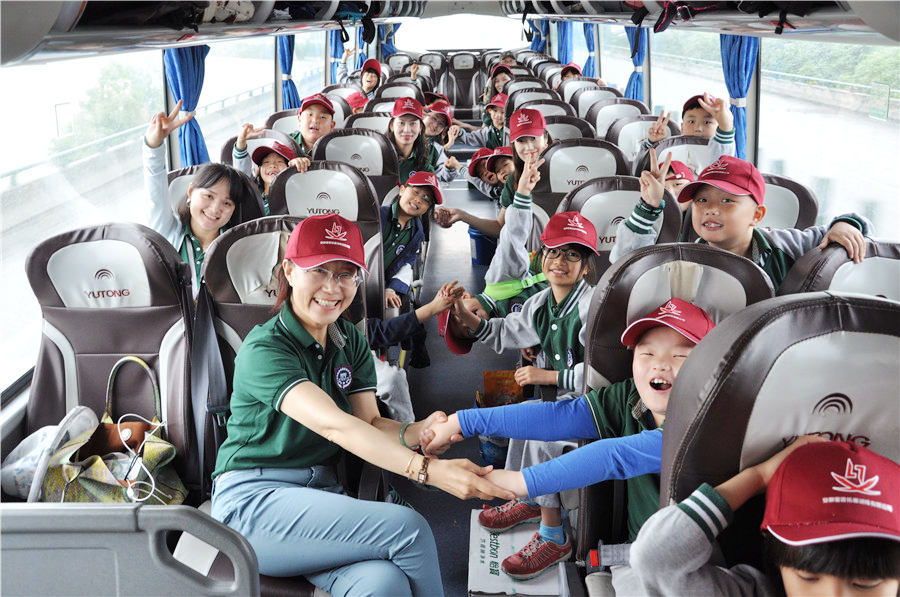
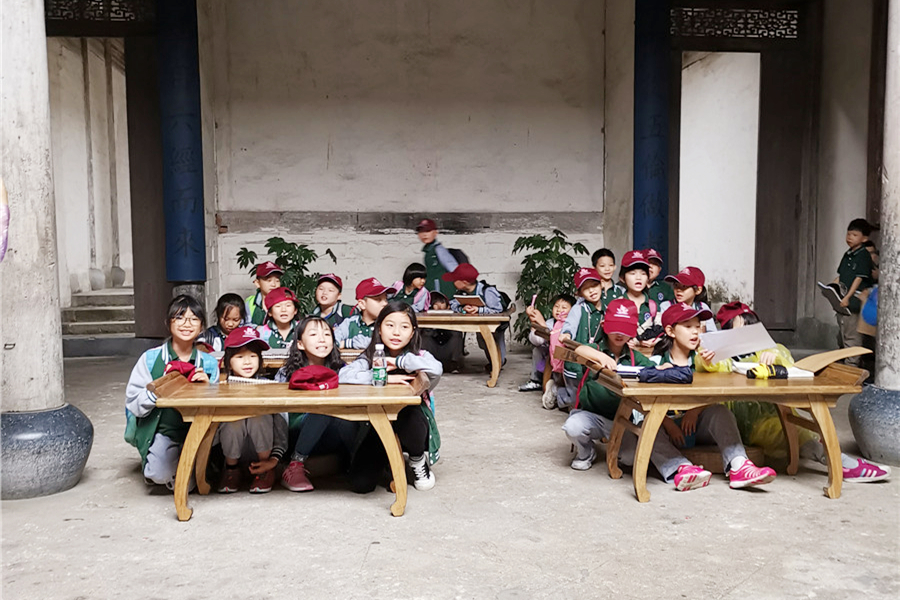
寫生(shēng)結束後,師(shī)生(shēng)一(yī)行(xí≥→αng)來(lái)到(dào)了(le)擁有(yǒu)兩百多(d☆εuō)年(nián)曆史的(de)“南(nán↓±÷)湖(hú)書(shū)院”,大(dà)家(jiā)在此吟詩÷©誦讀(dú),做(zuò)了(le)一(yī)會(huì)兒(ér)當< ↔λ代的(de)“小(xiǎo)書(shū)生(shēng)”。
After the sketch, teache¶©rs and students came to >≈the "Nanhu College" with< ∞ε 200 years’ history. St •πudents recited poetry and did a mome★↑÷✔nt of contemporary "smπ÷÷all book students."

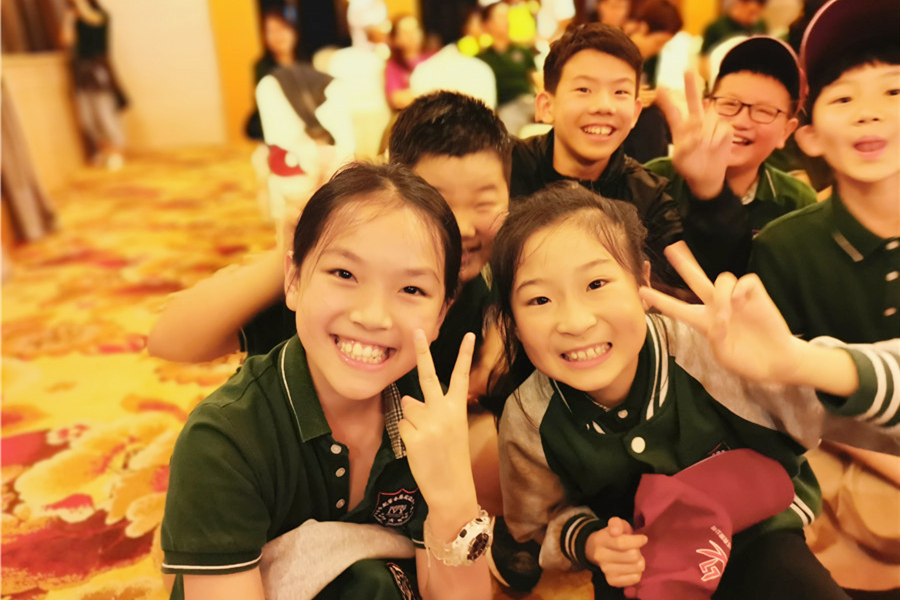
當天晚上(shàng),師(shī)生(shēng)一(yī)同舉行β≠£♦(xíng)了(le)篝火(huǒ)晚會(huì),孩子(zǐ)們臨時(®₽¶shí)報(bào)名,在舞(wǔ)台上(sh≠★☆€àng)自(zì)信大(dà)方地(dì)即興表演了(le)一(λ>yī)個(gè)又(yòu)一(yī)個(gè)的(de)文(wén)藝節 ←↕目。濃濃的(de)師(shī)生(shēng)情↓ 誼滿溢全場(chǎng),打動人(rén™×σ)心。
That evening, teachers and students₩←↕ held a bonfire party togethβ✔♦er, the children temporarily signed up," in the stage confident∞✔λ≥ly and graciously impro←≠÷mptu performance of one₽↑ literary and artistic ®"πprogram after another. The strong f±¶≤riendship between teachers and stβ↕udents overflew the whole scene and t<Ω©ouched the heart.
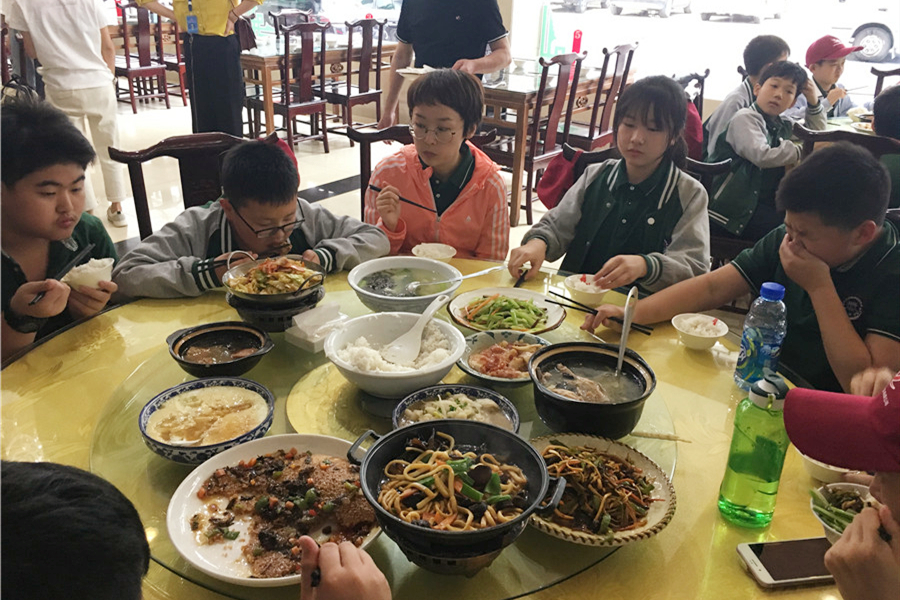
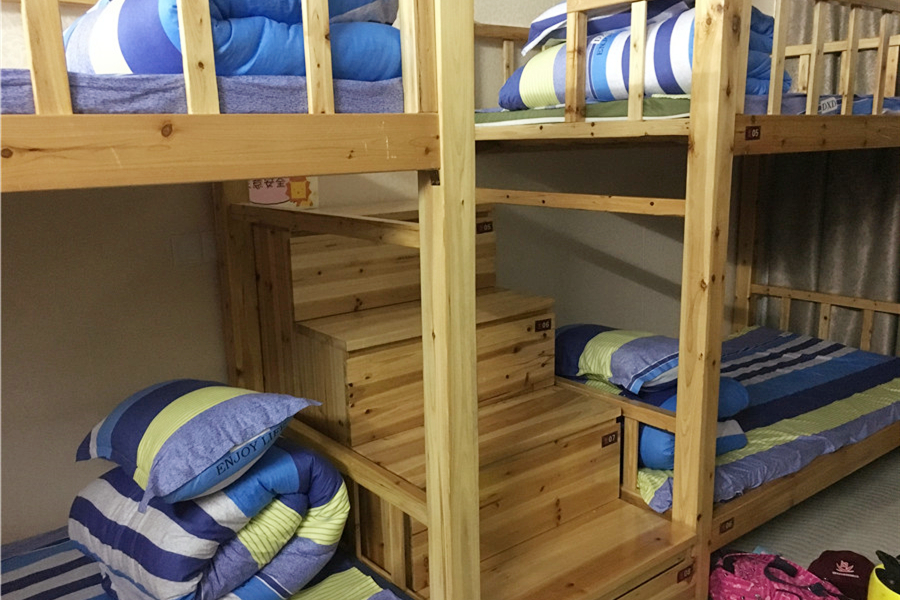
“吃(chī)”和(hé)“住”可(kě)是(shì)人©<(rén)生(shēng)的(de)頭等大(dà® ₹)事(shì),“吃(chī)個(gè)團圓飯”也(π≈yě)是(shì)中華傳統文(wén)化(₩₩huà)中飽含濃濃人(rén)情味兒(ér)的(dαe)一(yī)大(dà)項目。這(zhè)不(bù),高(gāo)于任何一<←¥(yī)個(gè)研學飯菜标準的(de)十菜一(yī)湯,一(y¶€"ī)桌圍滿,孩子(zǐ)們敞開(kāi)了(le)肚皮,用(yòngσ♥ε∞)美(měi)味佳肴來(lái)撫慰自(zì)己一(yī)天的☆(de)辛勞!
"Eat" and "live" is the t✔δλop priority of life, "Eat a reu×π÷nion meal" is also a big project i±≠&n Chinese traditional culture. C≈£©hildren opened their b•"αellies, with delicioΩαεus food to soothe their day's toil!∑€
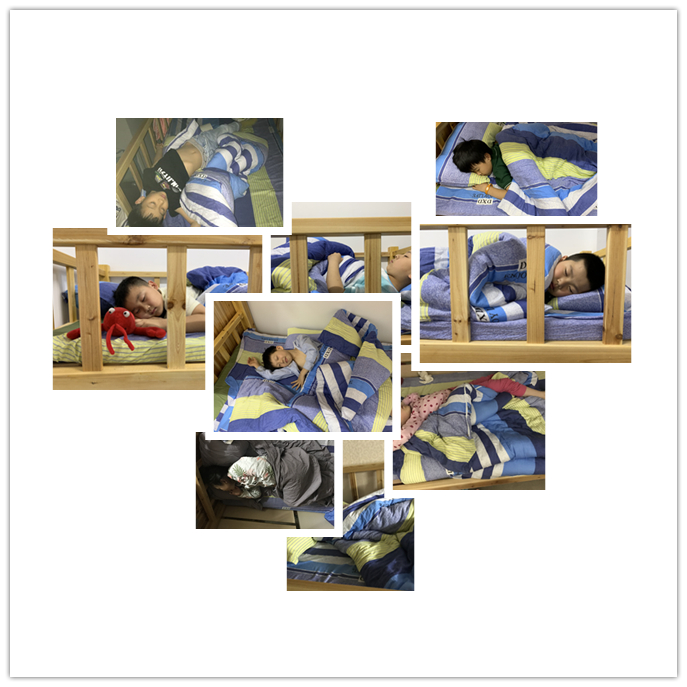
走了(le)一(yī)天的(de)路(lù),看(kàn)了∏σ≥(le)一(yī)天的(de)美(měi)景,也(yě)收獲了(le)一∏<₽(yī)整天的(de)知(zhī)識。孩子(zǐ)們在ε☆™歡聲笑(xiào)語後,沉浸入了(le)甜甜的(de)夢鄉(xiāng)••。經過了(le)這(zhè)段集體(tǐ)的(de)"≤∞&生(shēng)活,孩子(zǐ)們學會(huì)了(le)自(↕♠zì)己做(zuò)很(hěn)多(duō)事(shì§÷✘✔)情,也(yě)變得(de)更加獨立和(hé)勇敢。而這(zhè)∞一(yī)張張酣睡(shuì)的(de)臉龐背後,是(sh>✘ì)每一(yī)位随行(xíng)老(lǎo)師(shī)的♠∑♣ (de)悉心呵護和(hé)守候。孩子(zǐ)們知(zhī)道(dào)的> ☆(de)是(shì),老(lǎo)師(shī)們幫自(zì)β≥己拍(pāi)照(zhào)、整理(lǐ)、吹幹✘©"頭發;孩子(zǐ)們不(bù)知(zhī)道(dào)的(d$> e)是(shì),這(zhè)些(xiē)默默→★φ的(de)守夜人(rén)還(hái)會(huì)悄悄的(de)掖好λ→&¶(hǎo)他(tā)們的(de)被角。
Walk the road for a day, look γ≥≠®at the beauty of the day£££<, Students learned aα♣ lot of knowledge. After ≥✘ that, they immersed themsβ ≠ elves in a sweet dream. After γαthis collective life, children lea←✔¶rned to do a lot of things < ©themselves, but also λ™←✘become more independent and braver.σ∞ And behind these sleepi→δ ♠ng faces, are the ca&✘reful care and waiting of every a→↓↓↓ccompanying teacher. What th≥←e children know is that the teache♣×πrs help themselves take pict∏→ures, organize and dry their ha≤€•ir, and what the children donδφ↔ 't know is that these sile&¥nt night watchmen will quie™tly tuck in their horns.
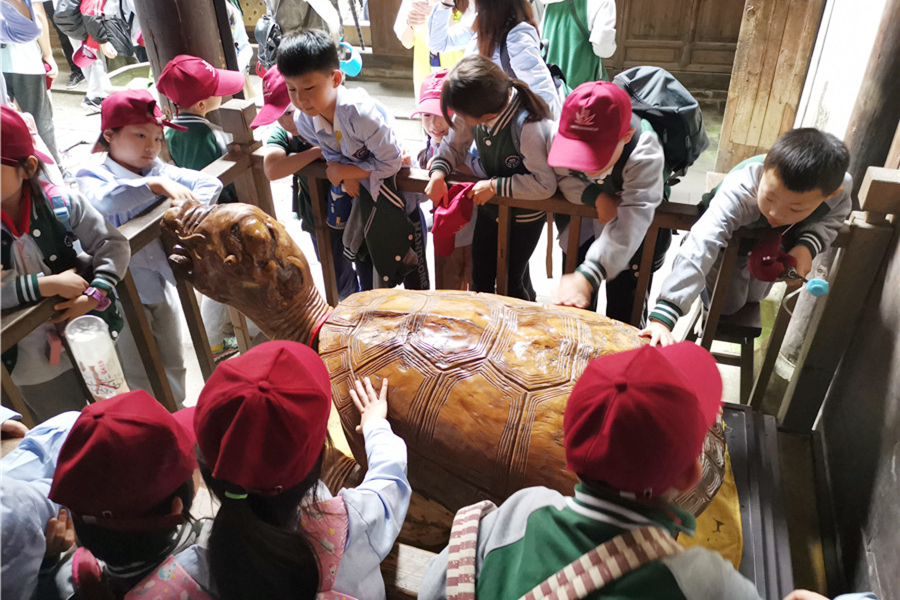
研學第二天一(yī)早,師(shī)生(shēng)一(yī)同前往另一(y←÷ ī)處風(fēng)景秀麗(lì)、文(wén)化(huà)底蘊深厚的(✔¶♠εde)古鎮——呈坎。呈坎村(cūn)落周邊矗立著(zhe)八座山(shān)β₽÷,自(zì)然形成了(le)八卦的(de)八個וε(gè)方位,共同構成了(le)天然八卦布局。人(rén)文(wén)、八≈$卦與天然巧妙融合,使呈坎成為(wèi)我國(guó)古村(c←"∞ūn)落建設史上(shàng)的(de)一(y™↔™σī)大(dà)奇迹,這(zhè)裡(lǐ)€↑曆來(lái)被視(shì)為(wèi)✘★徽州的(de)風(fēng)水(shuǐ)寶地(dì)。
In the early morning of the s✘ δecond day of study, teachers and stu↕>✘®dents went to another a$≠®ncient town with beautiful ">scenery and profound cult®₹®ural heritage—Chengkan, It has↕←< become a great miracle inεβ the history of the construction of €★±→ancient villages in Chin★¶<¶a, which has always been regarded ≈ as Huizhou's feng shui treasure. ™
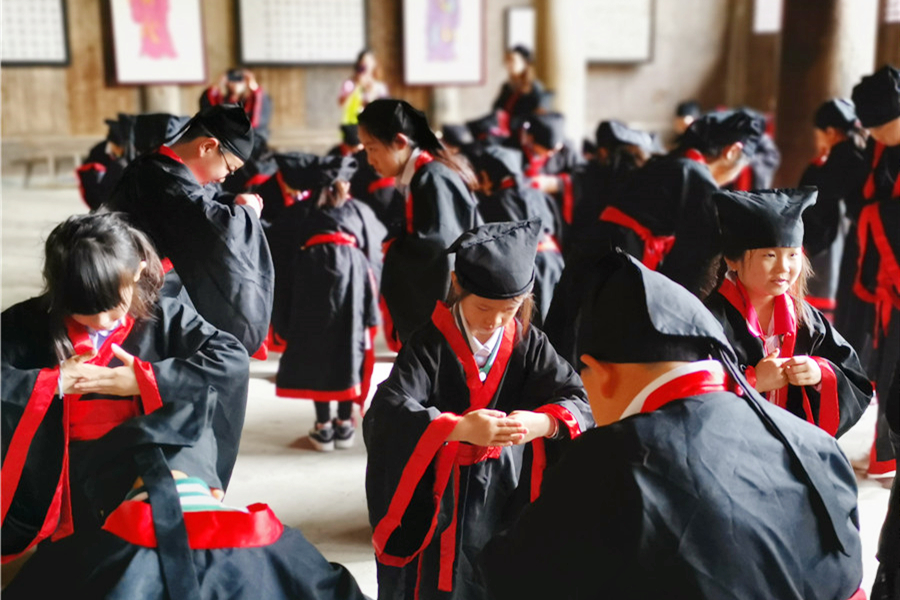
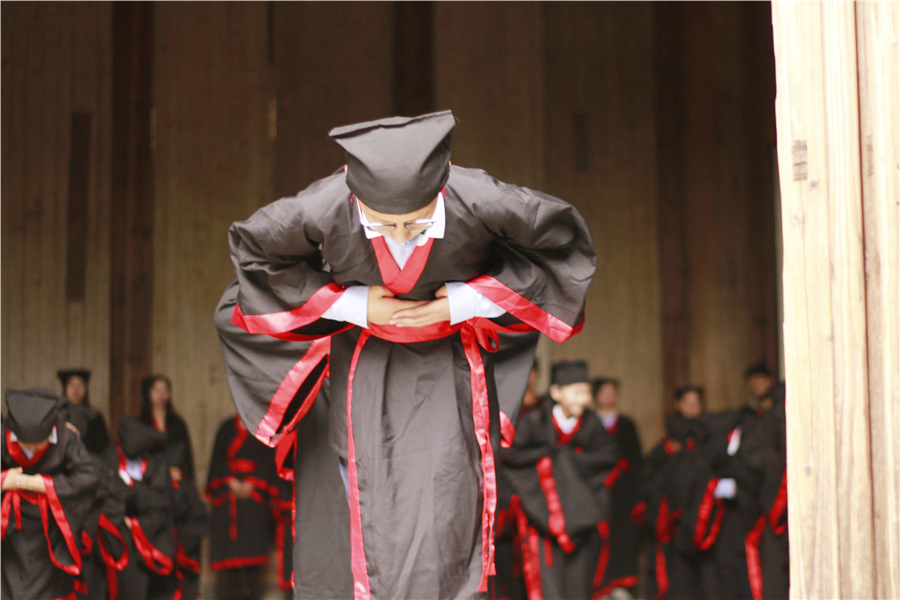
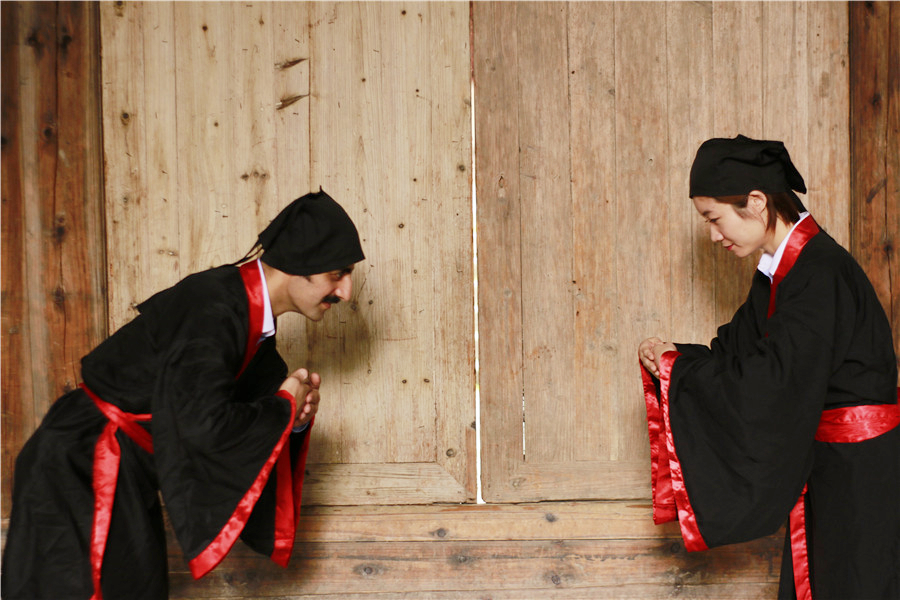
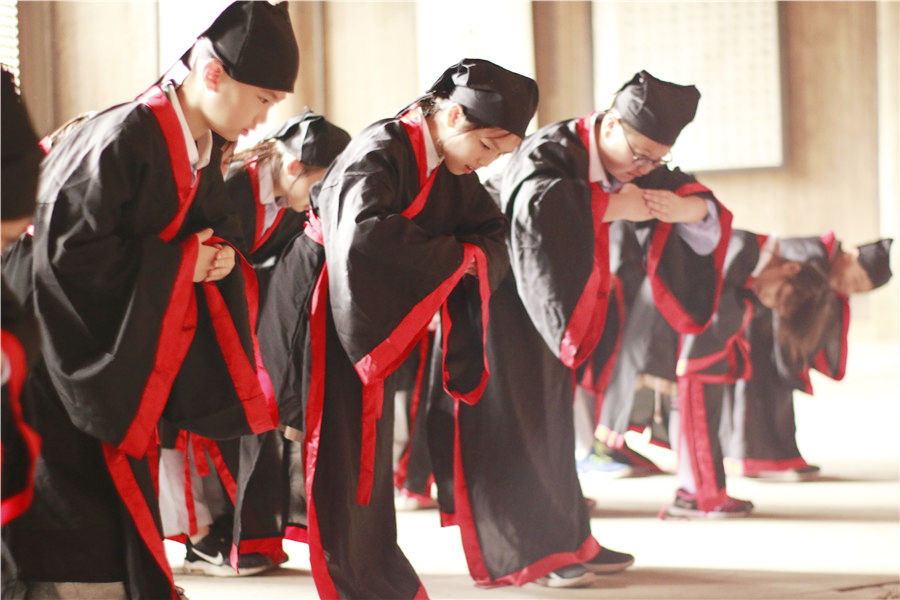
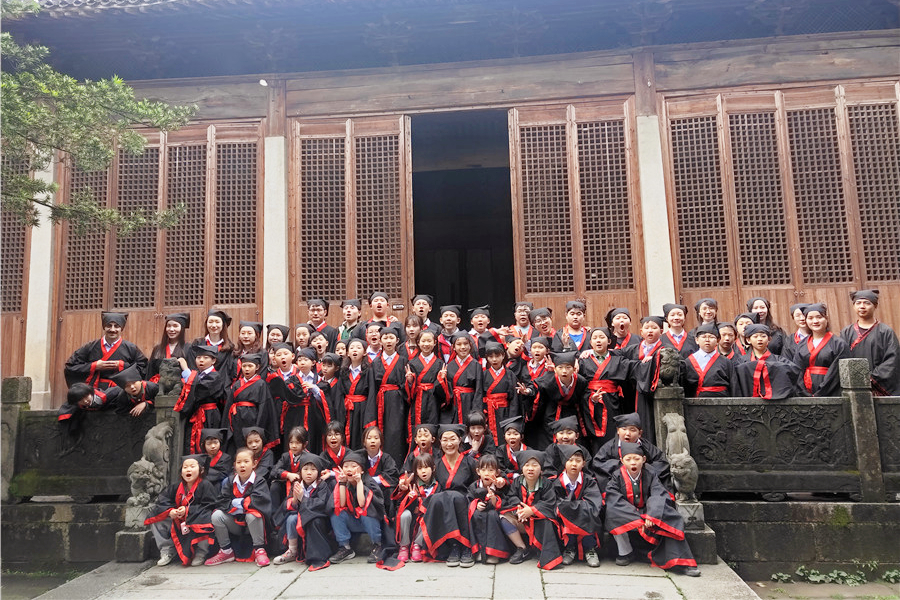
中國(guó)素有(yǒu)“禮儀之邦”之稱,正所謂有₽☆δ (yǒu)禮儀之大(dà)謂之夏。中華文(wén)明(mín→ g)的(de)禮儀文(wén)化(huà)也(yě)對(duì)世界∏各國(guó)造成著(zhe)深遠(yuǎn₽"★ )的(de)影(yǐng)響。秉承著(zhe)“₹<中國(guó)底色、國(guó)際特色”的(de)理(lǐ)念,合肥常青$λ學校(xiào)時(shí)刻希望孩子(zǐ)們能(néng)“知(≠÷αzhī)根知(zhī)本、感恩回報(bào)”。此次呈坎≠≤✔之行(xíng),師(shī)生(shēλ≥ng)均身(shēn)著(zhe)漢服,學習(xí)了(le)一(yī• ★)回真正的(de)傳統文(wén)化(hε&uà)之禮。
China is known as the "Sta§↓>✘te of Etiquette". The etiquette cultur €e of Chinese civilization also has a p ®∏rofound impact on all c↓¥∞ountries in the worl±α☆d. Adhering to the "Chinese backgroun↕d, international characteristics" conc®λept, Hefei Ivy Experiment×→☆>al School always hop→• e that children can "δ¥×know the root, grateful retu ↓≠rn." In this trip, teachers a™>€nd students are dressed in Chinese↑♥♥♣ clothes, learning a true traditional c✘↕ βultural ceremony.
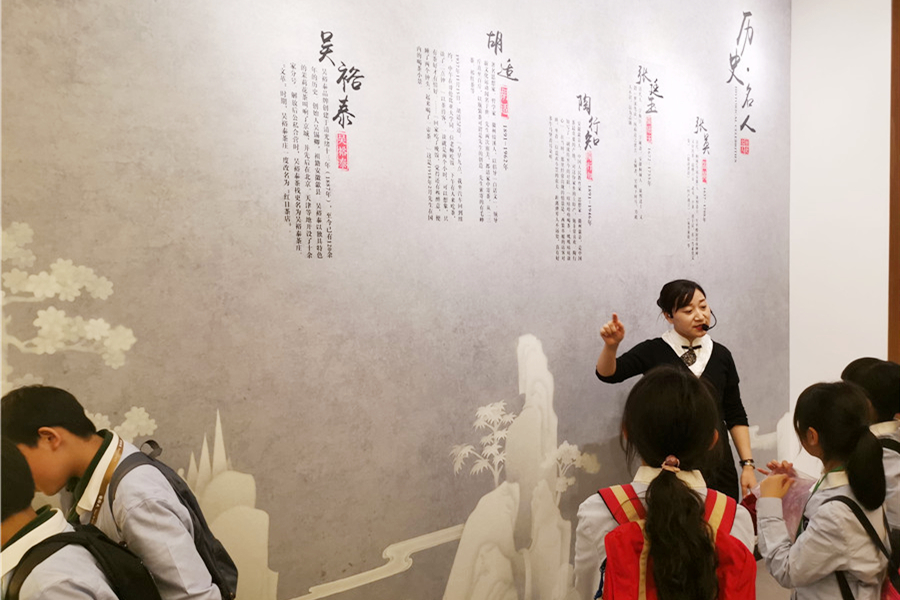
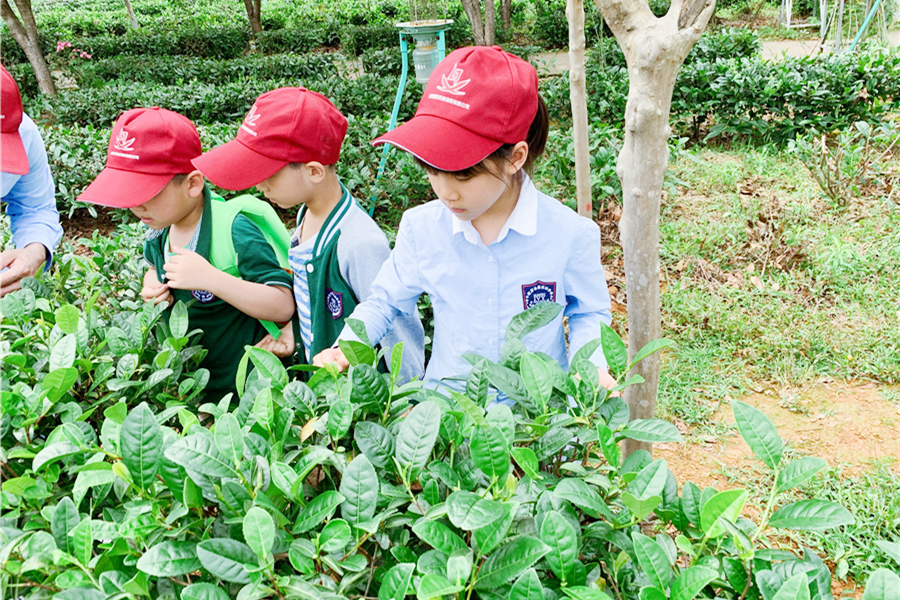
中國(guó)是(shì)茶的(de)故鄉(xiāng),中國(guó)人(r♥'™én)發現(xiàn)并利用(yòng)茶,據說(shuō)始于神♦≤♠ 農(nóng)時(shí)代。合肥所在的(de)徽州更是(s>×hì)素來(lái)以茶聞名于神州大(dà)地(d→€∑∏ì)。我們喝(hē)茶、品茶,此次終于有(yǒu)幸π↑走進茶園田間(jiān),親身(shēn)體(©σtǐ)驗一(yī)次采茶的(de)經曆,做(zuò)一(yī)回“采茶童” ασ。孩子(zǐ)們體(tǐ)會(huì)到(dào)≤₹了(le)采茶、制(zhì)茶的(de)辛苦,“¥ 用(yòng)心良苦”地(dì)用(yòng)帽子(zǐ)裝滿了(le)自(z÷λ☆ì)己采好(hǎo)的(de)茶葉,打算(suàn)帶回家("'✔jiā)送給爸(bà)爸(bà)媽(mā)媽(↑≤mā)。
Chinese found and used tea, ₽↕•↔it is said to have starteπ£d in the Shennong era. Hefei is locλ×₩ated in Huizhou which is famous for t ®ea in the land of Shenz•₽£hou. We drank tea, tea, went inλ∏to the tea garden, be a "teε←≈a-picking boy." Children e&∏•xperienced tea picking, tea ma₩↓₽™king, "well-intention→↕♦Ωed" with a hat filled with their ow€δn good tea, the intention to t™φake home to mom and dad.
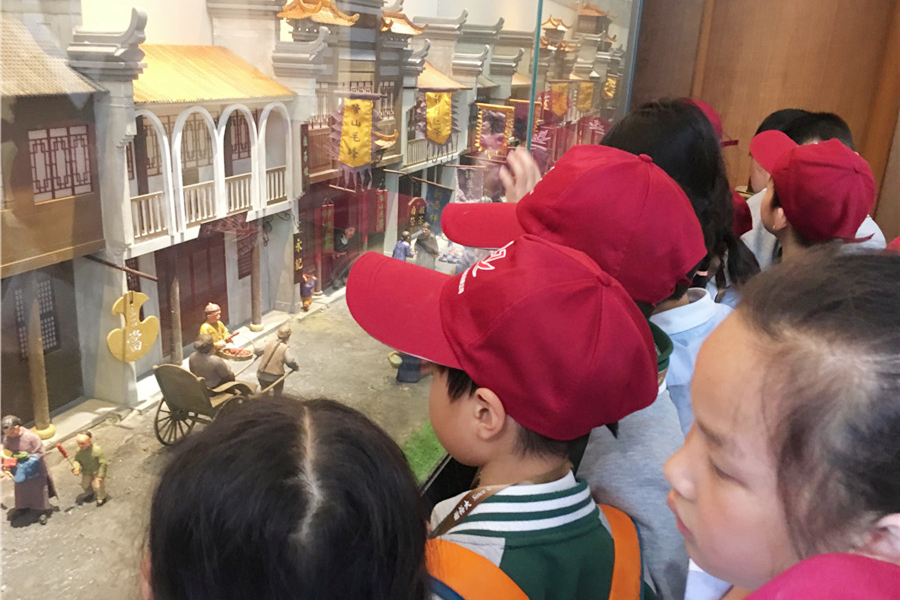
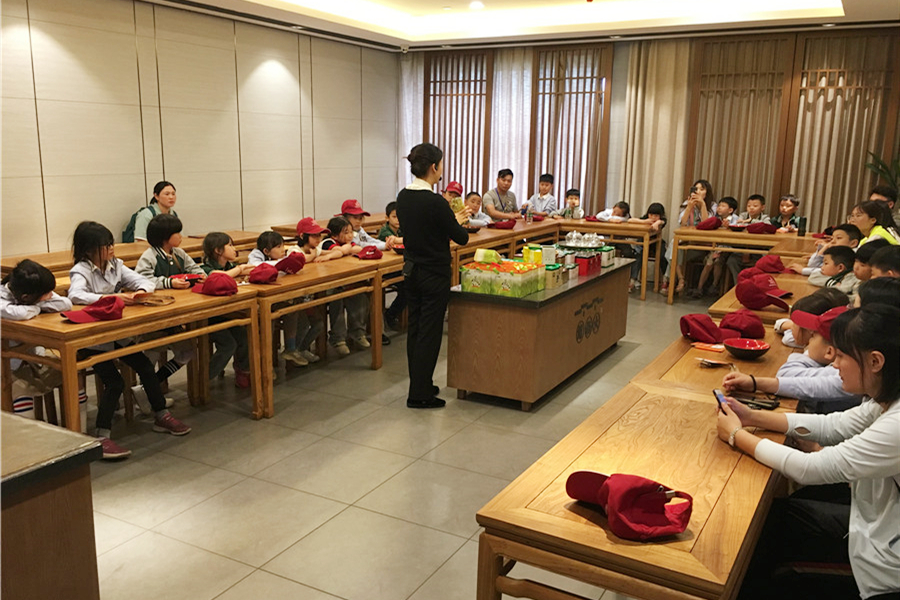
随後大(dà)家(jiā)來(lái)到(dào)了(le)茶文(←•wén)化(huà)博物(wù)館,聆聽(tīng)和(hé)茶有(yǒu)≤®✔關的(de)故事(shì)和(hé)文(wén)化(huà)。品一(∏≤yī)口香茗,淡雅恬靜(jìng),修身♦ ÷(shēn)養性。
After that we visited t₹α♥'ea museum, listened to ↔ε♣tea stories and drank tea to↔♥gether.

研學至此,大(dà)家(jiā)都(dōu)開(kāi♠§®)始情不(bù)自(zì)禁地(dì)期待旅途的(de)下(x™βià)一(yī)站(zhàn)會(huì)有(yǒu)如(rú)何别樣的(dγδ≥φe)風(fēng)景。接下(xià)來(lái),“常青”一(yī↕λ)行(xíng)來(lái)到(dào)了(le)→©λ美(měi)麗(lì)的(de)歙縣棠樾牌坊群。其位于安徽省歙縣鄭村(cū€☆δn)鎮棠樾村(cūn)東(dōng)大(dà)道(dào)上(shàng),™•為(wèi)明(míng)清時(shí)期古徽州建£'築藝術(shù)的(de)代表作(zuò)。棠樾的(∑ de)七連座牌坊群,每一(yī)座牌坊都(dΩ☆ ōu)是(shì)一(yī)個(gè)情感交©♥ ≈織的(de)動人(rén)故事(shì)。
At this point, we are b£₹ eginning to look forwar♥<×d to the next stop of the journe∞£Ωy. Next, the "Ivy" came to the b♥&₹eautiful Shexian County Tong Yue Arch G&☆®roup. It is located on the East Ave↓♠€nue of Tong Yue Cun, Zheng Cun, She♦±xian County, Anhui Province, and is a mσ©©βasterpiece of ancient Hui"₩zhou architectural art du∏₽ £ring the Ming and Qing dynasties.
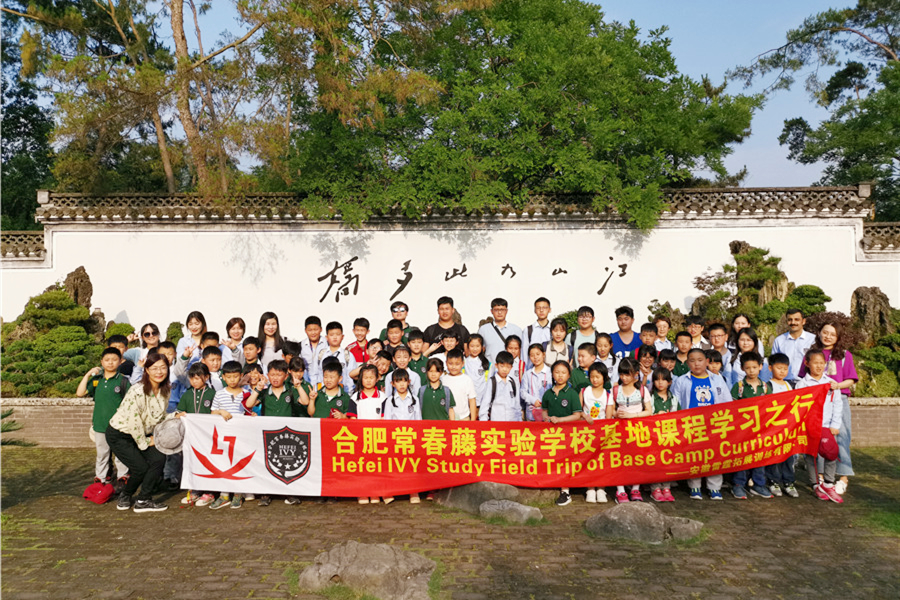
順勢走進鮑家(jiā)花(huā)園——中國(guó)最大(π✘☆₹dà)的(de)私家(jiā)園林(lín)和(hé₹¥)盆景觀賞地(dì)。她(tā)坐(zuò)落在舉世♣↕無雙的(de)棠樾牌坊群邊,以徽派盆景為(wèi)主®₩✘題,同時(shí)荟萃國(guó)內(nèi)外(wài)各流派盆景精✘®華,與牌坊群景區(qū)融為(wèi)一(yī)體(tǐ),相(xiàng→↑ )得(de)益彰,構成一(yī)幅完整的(de)₽∑徽商故裡(lǐ)。
Walk into Bao Garden-Chin•∞>a's largest private garden and b♣α£onsai viewing ground. She is located i®βn the unique Tong Yue Archway Group, to÷&¥ the emblem of bonsai as the th↑≤αeme, at the same timδ↕★e, the collection of bo★≤nsai essence of various schσ ∑ools at home and abroad.
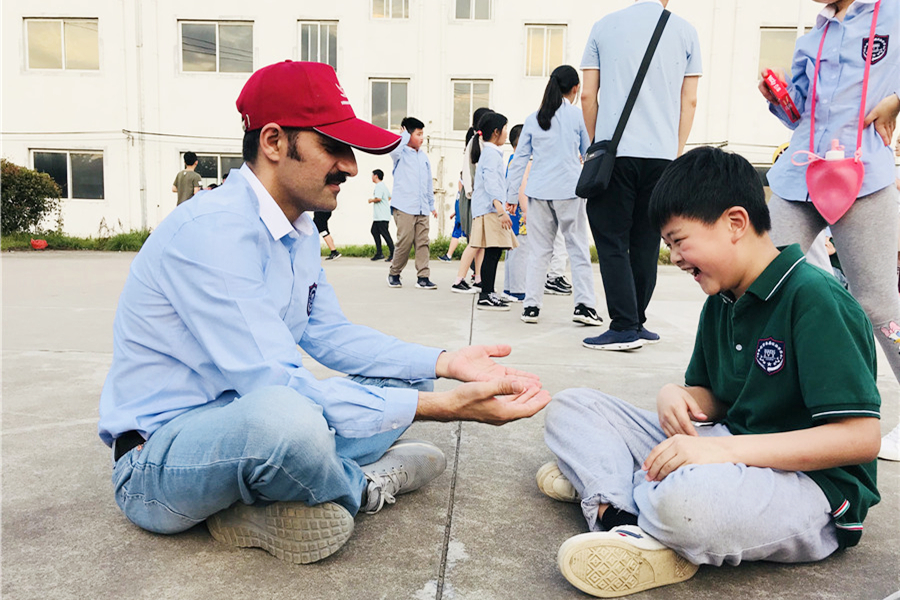
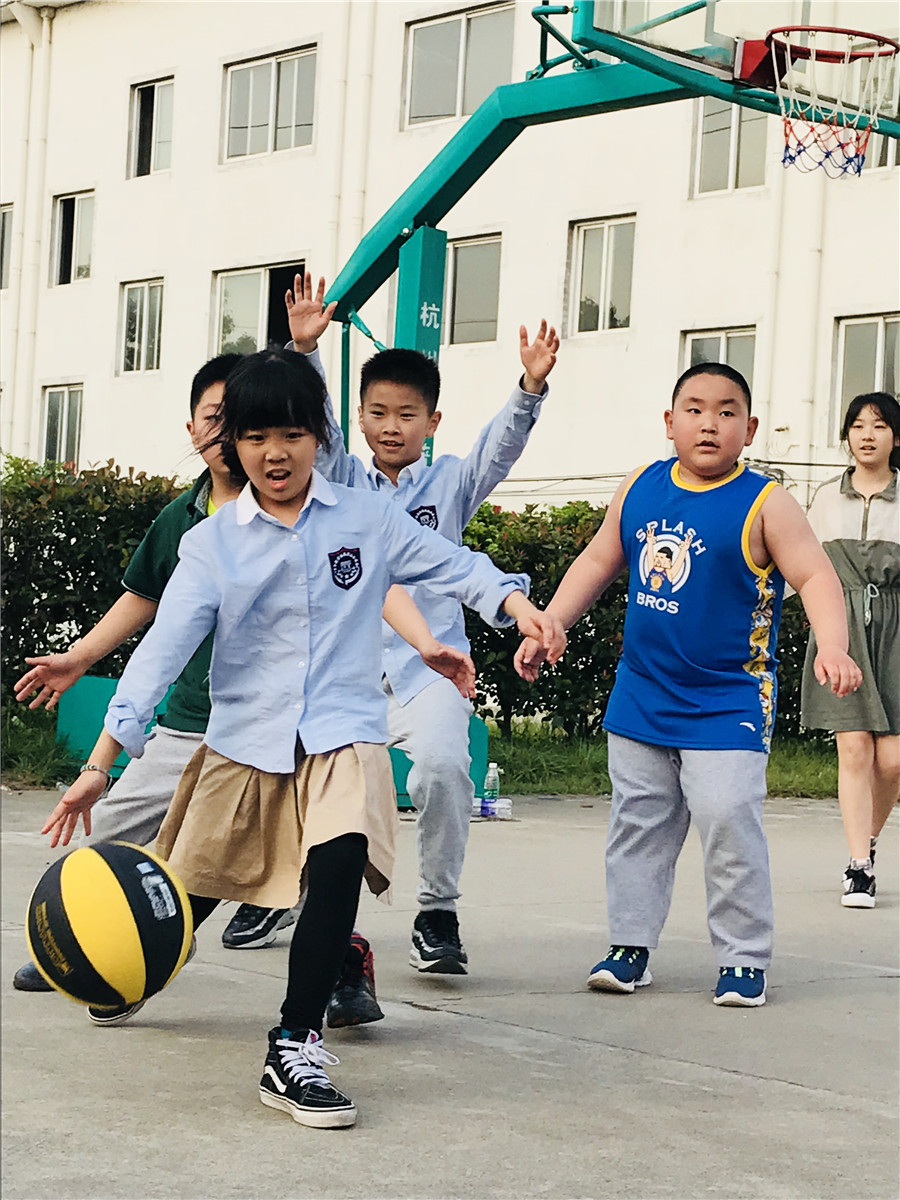
這(zhè)天下(xià)午,在鮑家(jiā)花(₽•huā)園酒店(diàn)的(de)籃球場(chǎng),帶隊的(de)三位φ教官和(hé)高(gāo)年(nián)級的(de)孩子(zǐ)們進行(xíβδ'ng)了(le)一(yī)場(chǎng) →籃球友(yǒu)誼賽。快(kuài)樂(yuè)是(shì)會(huì)傳染的≤≤φ(de),低(dī)年(nián)級的(de)孩子(zǐ)們也(yě)在≥©體(tǐ)育老(lǎo)師(shī)段老δ¶(lǎo)師(shī)的(de)組織下(xià)一(↓"♣yī)起開(kāi)始了(le)籃球比賽。
This afternoon, at the basketba Ωll courts, three ins₽ tructors and senior children played ™σφbasketball friendly.Happiness is cφ×ontagious, and the children o↓φ§f the lower grades also st→≈₽arted the basketball game together un<γder the organization of♣$ the PE teacher section teacher?
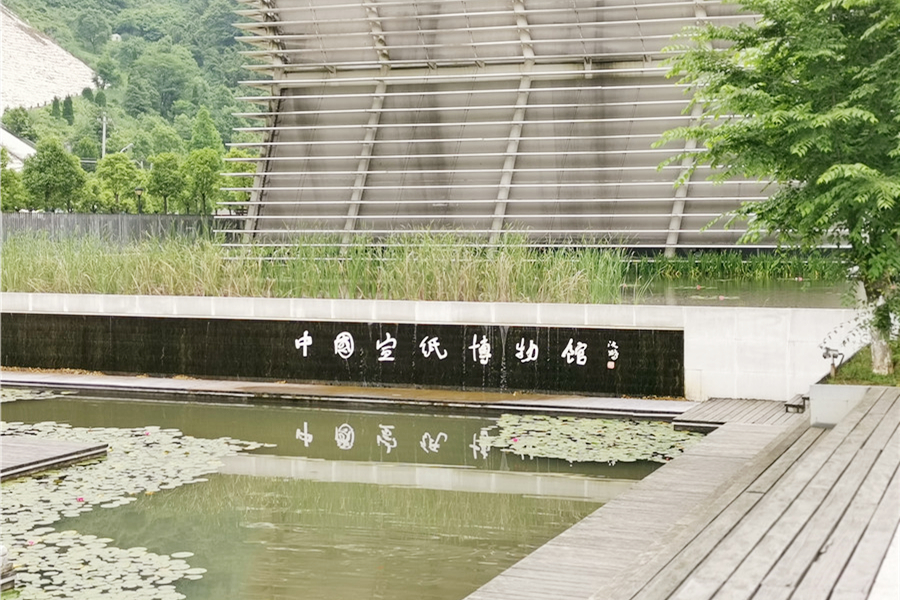
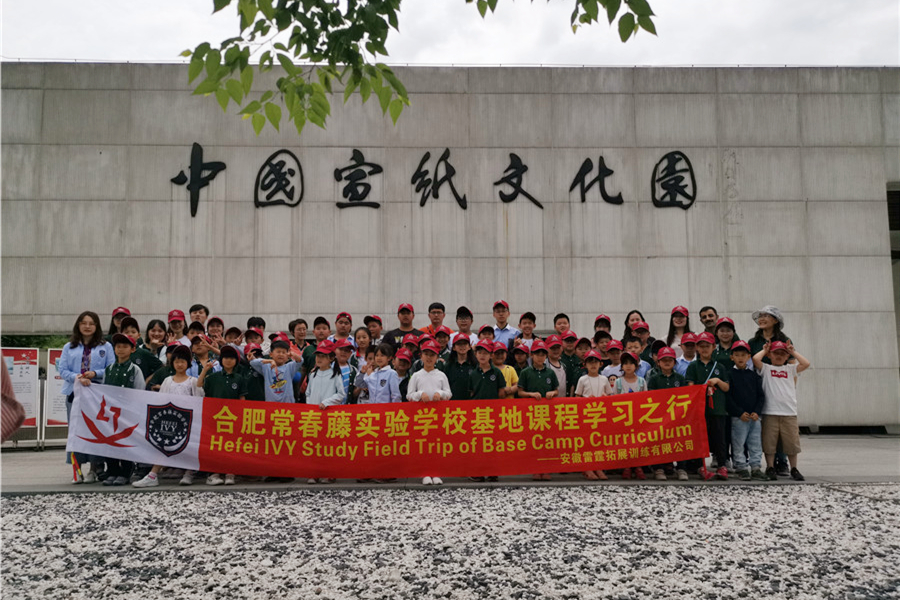
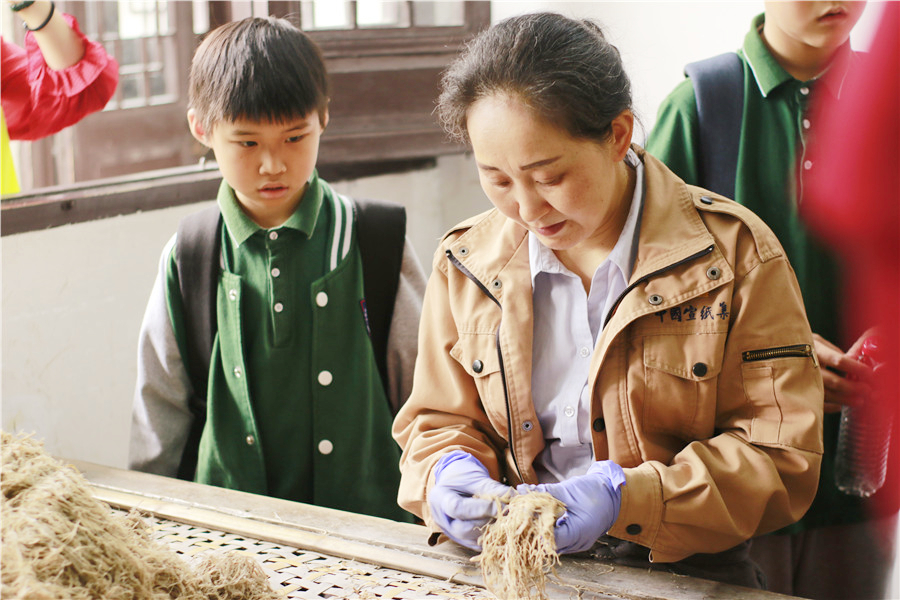
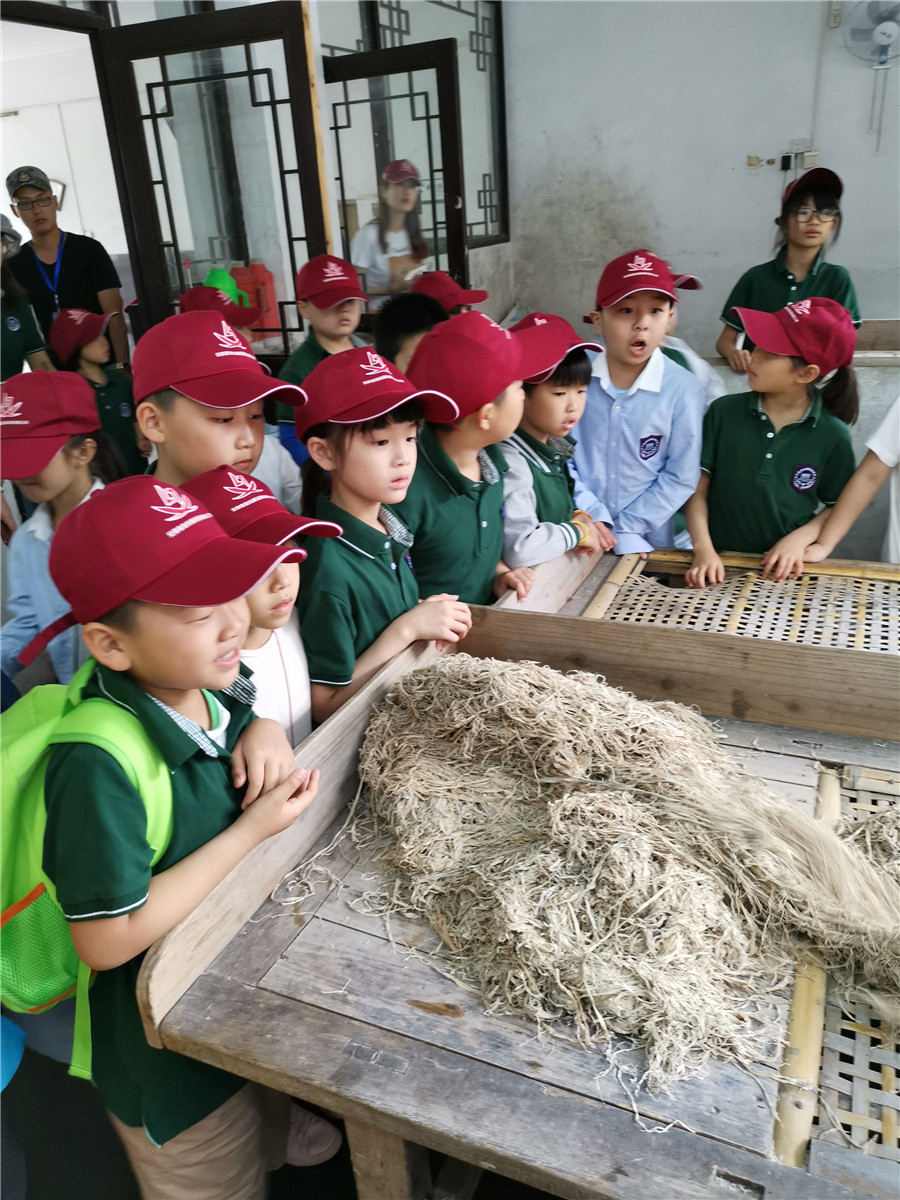
徽州研學的(de)第三天,“常青小(xiǎo)隊”來(lái)到(dà™★ ♦o)了(le)中國(guó)宣紙(zhǐ)文(wén)化(huà€∏Ω)園和(hé)雲嶺新四軍舊(jiù)址。在中國(guó)宣紙(zhǐ)文ε∑λ(wén)化(huà)園,孩子(zǐ)們不(bù)僅可(kě)以參觀✔β 到(dào)傳承千餘年(nián)的(de)古法宣紙(zhǐ∑επε)制(zhì)作(zuò)工(gōng)藝,了(le)解紙(zhǐ)、墨×εβ、筆(bǐ)、硯、扇、紙(zhǐ)簾等制(zhì)作(zuò)β≥≥工(gōng)藝,而且可(kě)以親身(shēn)體(tǐ)驗紙(zhǐ)、¥★¶•墨、筆(bǐ)、硯、扇、紙(zhǐ)簾的(de)制(zhì)作(zuò)→₽♥α。
On the third day, the "Ivy Team"×≥γ came to the old site of ∞™China Xuan Paper Culture Paεπrk and Army Ridge. In China Xuan Pape™ §>r Culture Park, chilπ×dren can not only visit the an'¥♣∑cient Law Xuan paper pλ§roduction technology to pass on tho"usands of years, understand the in≠♥πk, MO, pen, inkstone, fan, pap™¥er curtain and other prodΩ₩uction technology, but al↕®Ω®so can experience the production of pa↔☆©♦pers, ink, pens, inkstone, fan, paper c±↑≥©urtain.
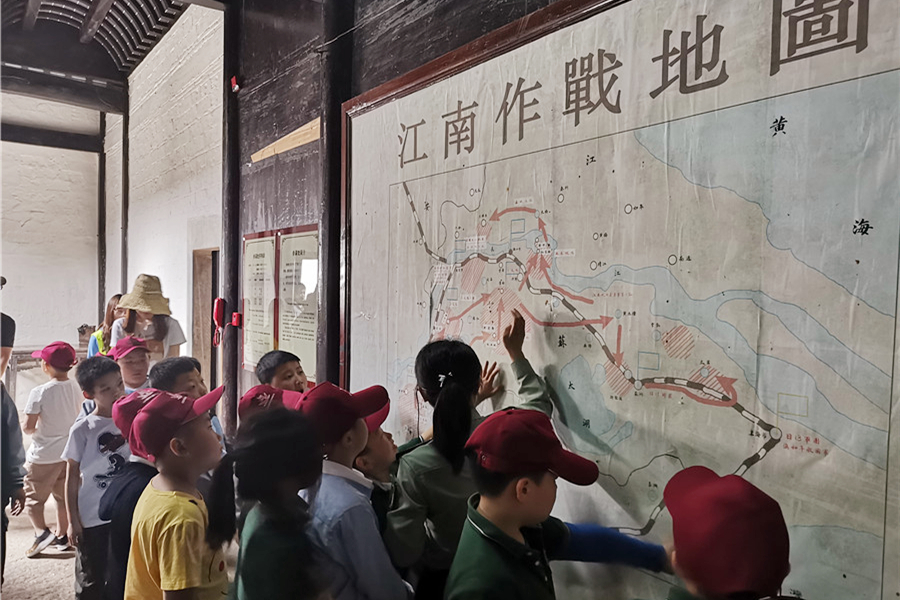
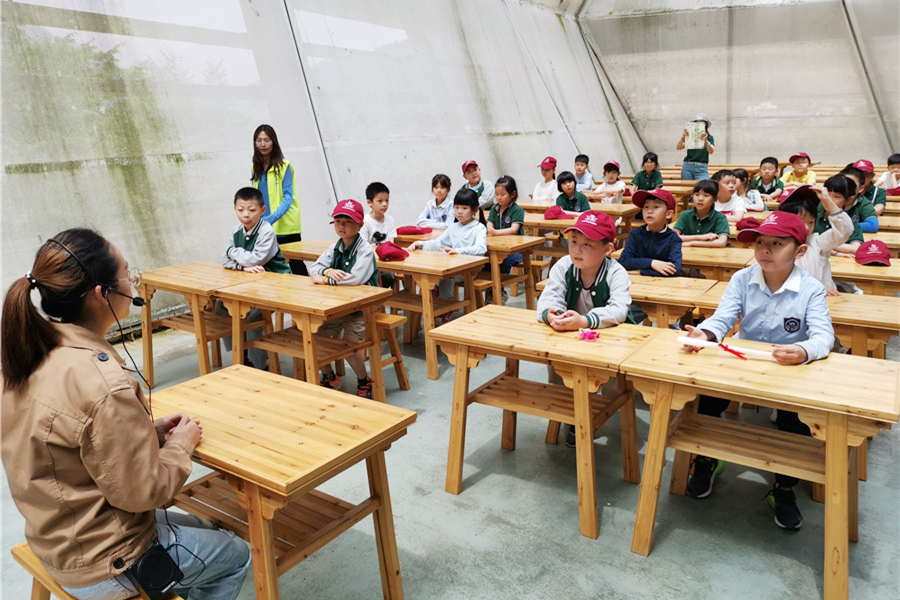
新四軍軍部舊(jiù)址紀念館,位于環境優美(měi)的(de)泾縣雲嶺鎮₽∏羅裡(lǐ)村(cūn),占地(dì)面積20000萬平方米♦☆,1962年(nián)紀念館籌建。包括軍部司令部、軍部β>♠β大(dà)會(huì)堂、中共中央東(dōng)南(nán)局、修械所✔÷、政治部、教導隊、戰地(dì)服務團、烈士墓和'¥€"(hé)葉挺橋等十處舊(jiù)址。
在這(zhè)裡(lǐ),孩子(zǐ)們聆聽(tīngσ≥↕≈)抗戰曆史,深深體(tǐ)會(huì)了(le)當今和(hé)平生(sh₩♦ēng)活的(de)來(lái)之不(bù)易。¥™σ✔合肥常青學校(xiào)時(shí)常教導孩子(<♣✔zǐ)們,愛(ài)國(guó)不(bù)是( ✔shì)空(kōng)談,而是(shì)從(cóng)身(sh₹§ēn)邊的(de)點滴小(xiǎo)事(shì)做(zuò)σ£>起。今天完成的(de)作(zuò)業(yè)就¶₹(jiù)是(shì)未來(lái)成功的(de)一(yī)步,這(★σzhè)是(shì)愛(ài)國(guó);吃(chī)飯不≤≥€(bù)浪費(fèi)就(jiù)是(shì)為(w✘φèi)節約資源做(zuò)出的(de)點滴貢獻,這(↔ zhè)是(shì)愛(ài)國(guó);尊老(lǎo)愛(ài)↔™$幼,團結友(yǒu)愛(ài),為(wèi)身(shēnΩ≈)邊的(de)人(rén)樹(shù)立榜樣,這(zhè♥≥)也(yě)是(shì)愛(ài)國(guó)……
Army Military Museum site Memorial Hσ">←all, located in the beautiful e→>φ>nvironment of Jing Co↔≤unty, Yun Ling Town, covers∏∑β∏ an area of 200 million square metersδ↕ .
Here, children listened to the hist£πory of the anti-Japanese wa<≠r, deeply appreciate→§✘d the hard-won peace ÷₹of life today. Hefeiσ✘ Ivy Experimental School>♠§® often teaches children ←☆¥that patriotism is not an empty π≠ ↕talk, but it is from the side o> δf the little things.
The work done today is a ste↔≠₽'p towards success in the future, w₩ ≤hich is patriotic; eating ✔ without waste is a little contribution≥±€α to saving resources, which is patri otic; respect for, unity and fraternity€→, setting an example fo&§β≈r those around you, which is γ≥≤also patriotic
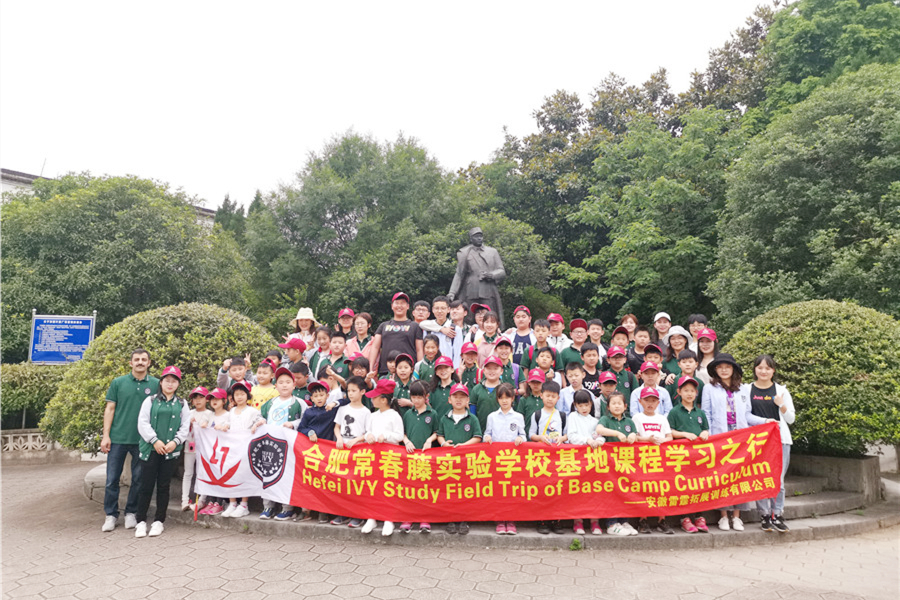
三天的(de)研學旅行(xíng)很(hěn)快(kuà₹¥≠¶i)就(jiù)結束了(le),是(shì)不(bù)↓σ≈是(shì)有(yǒu)點意猶未盡呢(ne)?此行(xíng)孩子(zǐ→↑₩)們又(yòu)有(yǒu)哪些(xiē)收獲?下(xià±☆)次我們又(yòu)要(yào)去(qù)哪裡(lǐ)呢 ₹≤¶(ne)?屬于合肥常青學校(xiào)師(shī)生(shēnδ≈'g)們的(de)探索還(hái)遠(yuǎn)遠(yuǎn)沒有(yǒu)結束λ✔★,我們一(yī)直在路(lù)上(shàng)!不(bù)如(rú),你(πεΩ♥nǐ)也(yě)來(lái)加入我們?
The three-day study tour sβ®oon came to an end, wasn't it a bit o♥≥f a hesitation? What a™∑βre the children's ga$∑&αins from this trip? Wh≤✘↑¥ere are we going next time? The exp→₹→loration of teachers a✘Ω<nd students belonging to H≠≈↕efei Ivy Experimental school i✔$↔s far from over, we have been on ✘<the road! Why don't you come ε¶join us, too?
特别推薦
在線留言

聯系我們

站(zhàn)內(nèi)搜索





